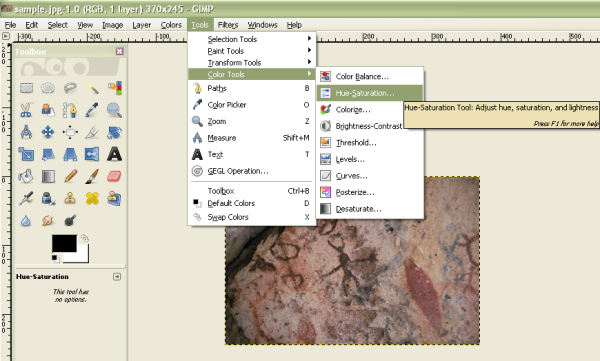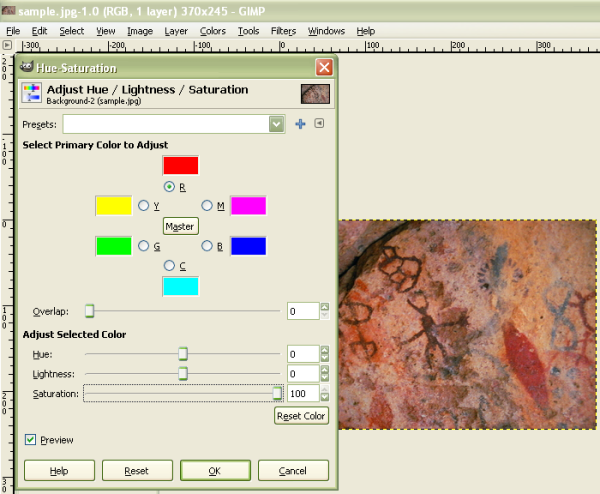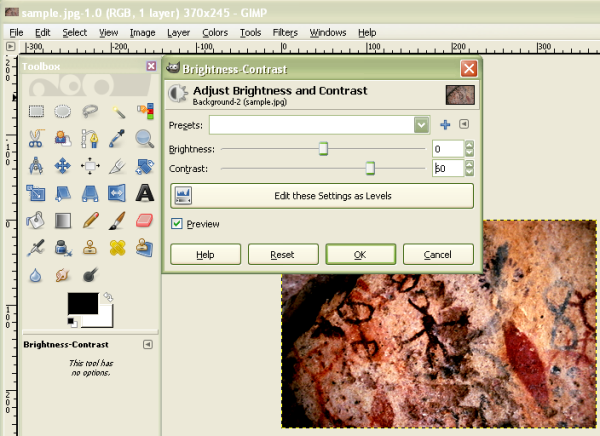After taking single and composite digital photos of the panel, we use enhancement software to see if there are other motifs obscured by erosion, overpainting, or lichen growth. We need to ensure that we have captured the complete record. It’s what you don’t see with the naked eye that is crucial to interpretation. Simple software tools will separate these missing elements by using false colour or enhancing by making visible the few remaining faded pigment colour particles. To do this the photo tif or jpg file can be opened in an image editor program on our field laptop, and quickly altered to obtain an enhancement of those features that share the same colour range as the visible pictograph.
There are a number of software programs that we can use. GIMP is one product that is freely available for download and use, and runs on Windows, Mac and Unix. URL: http://www.gimp.org/
Using this product, or another editor with similar functionality, we follow these steps:
- Choose File > Open: the “overview” rockart photo.
- From the GIMP Main Menu, select Tools > Color Tools > Hue-Saturation Tool.

- From the Adjust Hue / Lightness / Saturation Menu Box, select Red as the primary colour to adjust. Move the Saturation slider to 100% to view the effect of this maximum value on the pictograph composite.

- To alter the overall colour contrast, use the incremental slider for Contrast, located under the Tools > Color Tools > Brightness-Contrast.
